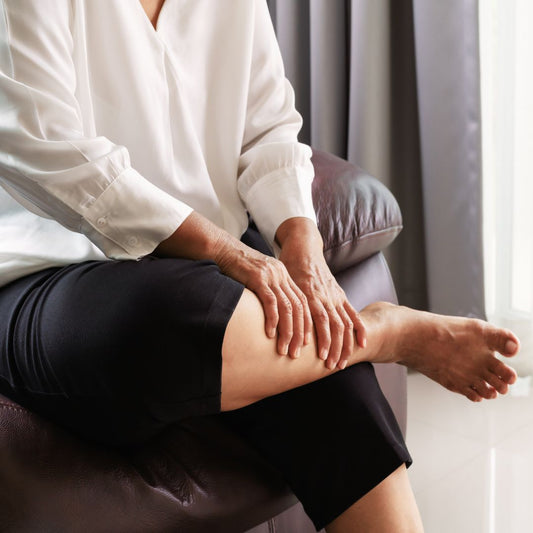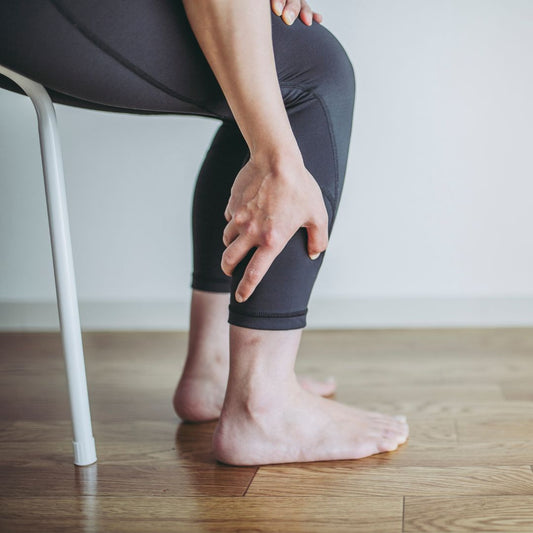Have you ever experienced a dull, sharp aching pain in the back of your lower leg? It could be the result of an issue in your calf muscle. While concerning, it’s important to know this type of injury is common for all activity levels.
Whether you’re an athlete, an avid walker, or someone who is constantly on their feet, calf pain can be a real issue. That said, what causes calf muscle pain?
Calf Muscle Pain Causes
Calf pain can be a result of many different issues. The most common conditions are as follows:
Muscle Strain: A muscle strain typically occurs due to the overuse of a specific muscle. In the case of the calf, this could be from exercises that overexert the lower leg such a running, powerlifting, biking, playing tennis, soccer, etc. Once strained, a person may experience limited range of movement, pain and soreness.
Muscle Cramps: Cramps in the calf are sudden and painful contractions of the muscle that can last a few seconds or several minutes. They’re usually caused by dehydration, exercise, injuries and mineral deficiencies.
Achilles Tendinitis: The Achilles tendon connects the plantaris, gastrocnemius and soleus muscles in the back of the ankle. Achilles tendinitis occurs by overuse, strain or stress on the tendon and causes pain in the heel or behind the calf when you touch or move it.
Poor Footwear: If an individual has shoes that don’t fit properly, the lack of support can cause issues in the feet, lower leg and calf muscle.
Sciatica: Sciatica occurs when an individual has herniated a disc in their back, and as a result, it has put pressure on the sciatic nerve. This nerve controls muscles in the lower leg and back of the knee and can cause pain, numbness, and tingling. All which can cause pain in the calf muscle.
Diabetic Peripheral Neuropathy DPN: DPN is a form of nerve damage caused by diabetes and pain may be experienced in the feet and lower leg.
Compartment Syndrome: When too much pressure builds up within the muscles, a condition such as compartment syndrome occurs. The symptoms may include severe pain that doesn’t improve with medication, trouble mobilizing and severe tightness. If this is the case for you, it’s important to seek medical intervention immediately.
Deep Vein Thrombosis (DVT): Another serious condition is DVT, which is the result of a blood clot forming deep in the vein in the arm, leg and calf. Symptoms may include visible veins, swelling in the leg, cramping, leg pain, and skin discoloration. If you develop the above symptoms, seek medical attention immediately.
How To Prevent Calf Muscle Pain
As with any muscle condition, there are ways to prevent injury and overuse of your calf muscles. Simple precautionary measures such as warming up and stretching before exercising and wearing proper footwear can make all the difference. Other preventative measures may include:
- Hydration: It’s important to drink a lot of water. By staying adequately hydrated, you can prevent muscle cramps.
- Gradual Progression: Check in with your body. If you haven’t been running, don’t try and run 10 miles. By gradual progressing in an activity you can start training your muscle to endure a new intensity level.
- Strength Training: Focus on building strength in your calf muscles at the gym. The more you strengthen various muscles, the more likely you can reduce the risk of injury.
Treatment Options For Calf Muscle Pain
If you have strained your calf muscle or have cramping that isn’t going away, there are natural ways to help alleviate the pain. A common treatment includes the RICE method.
Rest the areas
Ice the area for 20 minutes, using a covered ice pack.
Compress the area with a bandage (but if the pain gets worse, loosen the bandage).
Elevate the lower leg by sitting or lying down so the leg is above the level of the heart.
Other options do include taking over the counter anti-inflammatory medications, stretching and mobility exercises and taking a break from all activity that may exasperates any pain in the calf muscle. If the pain hasn’t gone away with any of the above treatments, consult your doctor or medical provider




